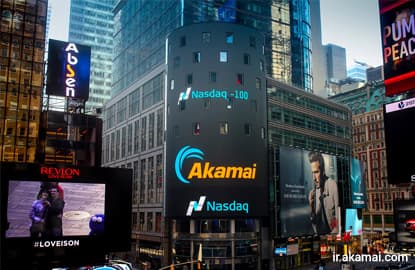
KUALA LUMPUR (June 8): Global businesses, especially in rapidly growing economies like Malaysia and South East Asia, are facing growing threats of distributed denial of service (DDoS) attacks, according to a report released by Akamai Technologies Inc.
Akamai is an internet services provider based in Cambridge, Massachusetts, United States.
In its report titled State of the Internet for the first quarter of 2016 (1QFY16), it saw a 126% year-on-year (y-o-y) increase in total DDoS attacks across its Akamai Intelligent Platform.
According to its website, the platform is the world's largest cloud-based platform for securely distributing and accelerating web content, enterprise applications and video.
Sectors that remain a key focus area for attacks include financial services, software and technology, media and entertainment, public sector assets, education, internet and telecom assets, retail, gaming, hotel and travel service providers, the report stated.
In terms of DDoS attack sources, China took the lead with 27%, while the United States came in second with 17%, and Turkey was third with 10% of attacking IP addresses.
This was the second consecutive quarter that Turkey made the top 10 list.
Sixty percent of the attacks that occurred in 1QFY16 used at least two attack vectors at once, making defense more difficult.
“The continued rise of multi-vector attacks suggests that attackers or their attack tools are growing more sophisticated,” the report stated.
An attack vector is a path or means by which a hacker or cracker can gain access to a computer or network server to wreak havoc. A multi-vector attack is known as the most complex type of DDoS attack.
In a multi-vector attack, a combination of different DDoS attack tools and approaches are merged. These kinds of attacks have been known as the most difficult to mitigate because they hit the target in different forms, and are capable of harming the processes at a larger level.
“This causes problems for security practitioners, since each attack vector requires unique mitigation controls,” the report noted, adding there was an increase of repeat attacks against online assets, with one Akamai customer recording 283 attacks against them in 1QFY16.
“That represents three separate attacks per day. Attackers seem to be becoming more persistent in trying to disrupt services against their targets,” it added.
Akamai said in the past, many attackers would see that a site or network was protected and move on but now, the latest trend is for attackers to hammer away at high-value organisations, regardless of effect, looking for a moment when defenses might drop.
“Another reason for the continued increase in repeat attacks is that acquiring and outfitting DDoS attack platforms has become cheap and easy to use,” it added.
The report also said DDoS attacks have also been used as a diversion technique to exhaust company resources, while attacks are launched against the primary target.
The report also stated that mega attacks — attacks that exceeded 100 gigabit per second (Gbps) — increased 137% y-o-y, with the largest hitting the software and technology, gaming, and media and entertainment sectors.

